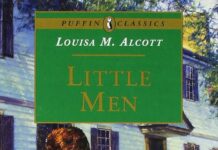In the realm of contemporary young adult literature, Ellen Hopkins has carved a distinctive niche with her raw, poetic narratives that delve into the complexities of human experience. Her novel Identical stands as a compelling exploration of identity, addiction, and the fragile bonds that hold families together. in this review, we journey through the layered realities Hopkins presents-two lives entwined by genetics yet diverging through starkly different choices and circumstances. With a measured lens, we unpack the novel’s themes, narrative style, and emotional resonance, inviting readers to reflect on the dualities that shape us all.
Exploring the Complex Narrative Structure That Intertwines two Parallel Lives in Identical

Ellen Hopkins masterfully crafts a narrative that follows two distinct lives growing parallel to each other, each shaped by the shadows of addiction and trauma. The story unfolds through alternating perspectives, inviting readers into the intimate worlds of identical twins who share a DNA blueprint yet experience vastly different realities. This dual-lens approach not only highlights their divergent paths but also emphasizes the subtle threads that tether their experiences together. Through vivid, raw prose, Hopkins reveals the complexity of identity and resilience, ensuring every chapter pulses with emotional intensity and layered meaning.
The structure itself acts as a reflection of the twins’ intertwined fates, where moments of convergence oscillate with periods of stark separation. The narrative rhythm mimics the ebb and flow of their struggles – moments of clarity punctuated by confusion and despair. Some notable elements that enrich this complex design include:
- Alternating viewpoints providing diverse emotional landscapes
- Nonlinear timeline that mirrors the fragmented nature of memory and pain
- Poetic verse woven throughout to ground the realism in a lyrical cadence
| Element | Purpose |
|---|---|
| Alternating Viewpoints | Highlights individual struggles while maintaining bond |
| Nonlinear Timeline | Represents fractured experiences and emotional flashbacks |
| Poetic Verse | Elevates narrative with emotional depth and rhythm |
Analyzing the Poetic Verse Style and Its Impact on Emotional Depth and Reader Engagement

Hopkins’ signature verse style transforms Identical into a compelling emotional experience, where the rhythmic fragmentation mirrors the tumultuous inner lives of the twin protagonists. the terse, clipped lines allow readers to feel the urgency and rawness of emotions without the distraction of verbose descriptions. Through this poetic structure,themes such as identity,addiction,and family strife become not just topics but visceral pulses that resonate on a deeply personal level.This style invites readers to pause, reflect, and internalize each carefully chosen word, creating a space where silence and sound coexist in poignant tension.
Several elements of her poetic craftsmanship contribute to increased reader engagement:
- Concise Imagery: Vivid snapshots replace long narratives, triggering the reader’s imagination to fill emotional gaps.
- Varied Line Lengths: The ebb and flow of verse pace reflect the characters’ fluctuating mental states.
- Strategic White Space: Pauses generated by spacing heighten dramatic tension and underscore significant moments.
| Poetic Element | Impact on Reader |
|---|---|
| Fragmentation | Creates intentional ambiguity,inviting interpretation |
| Enjambment | Generates momentum and surprise |
| Repetition | Emphasizes emotional beats and reinforces themes |
Unpacking the Themes of Identity,trauma,and Addiction Through Vivid Character Portrayals

Hopkins masterfully crafts her characters’ inner worlds, delving deep into the complexities of identity formation amidst the chaos of addiction and trauma. Through the lens of identical twins,the narrative contrasts how two seemingly identical lives can diverge dramatically based on personal choices and external influences. The vivid prose acts almost as a mirror, reflecting the fractured self and the ongoing struggle to reconcile public perception with private pain. The characters are not mere symbols; they breathe and bleed, making readers confront the uncomfortable realities of dependence, family secrets, and the quest for self-understanding.
What sets the portrayal apart is the rawness and nuance employed to present the multi-dimensional aspects of trauma’s aftermath. Consider the following thematic elements that Hopkins interweaves seamlessly throughout the story:
- fragmented Memory: How past wounds shape present actions.
- Dual Consciousness: The coexistence of hope and despair within the same mind.
- Resilience and Relapse: Capturing the cyclical nature of addiction without glamorizing it.
| Theme | Character Impact | Narrative Technique |
|---|---|---|
| Identity | Conflicting self-perceptions | Alternating perspectives |
| Trauma | Emotional scars | Poetic, fragmented verse |
| Addiction | cycle of dependence | Raw, candid language |
Examining the Authenticity of Twin Perspectives and the Challenges of Capturing Dual Experiences

Hopkins masterfully navigates the intricate layers of twin dynamics,capturing both the synergy and the clash of dual perspectives.The narrative delves deep into the subtle divergences in thought,feeling,and perception that distinguish the twins,highlighting how their shared DNA does not equate to identical emotional landscapes. This authentic portrayal challenges readers to recognise and respect the individuality existing within unity. Through alternating viewpoints, Hopkins crafts voices that are distinct yet harmoniously intertwined, immersing readers in simultaneous, sometimes conflicting realities.
Capturing such dual experiences in prose is no small feat, as it requires balancing clarity with complexity. Hopkins accomplishes this by utilizing a variety of narrative techniques:
- Shifting narrative styles that mirror each twin’s personality and mindset, creating a textured reading experience.
- Juxtaposition of internal monologues to reveal contrasting motivations and fears.
- Interwoven timelines that emphasize how shared moments can be interpreted differently.
| Challenge | Technique Used | Effect on Reader |
|---|---|---|
| Maintaining distinct voices | Varying narrative tone | Deepens emotional connection |
| Depicting divergence in experiences | Parallel storytelling | Enhances understanding of individuality |
| Portraying shared memory | Overlapping scenes | Highlights duality of perception |
How Ellen Hopkins Balances Harsh Realities with Moments of Hope Throughout the Story

Throughout Identical, Ellen Hopkins masterfully navigates the stark contrasts between despair and resilience, weaving a narrative that neither shies away from the brutal truths nor neglects the flickers of light that sustain her characters. The raw, frequently enough unsettling portrayal of addiction, trauma, and loss is balanced by moments of profound vulnerability and the enduring human spirit.Hopkins’ poetic prose captures the tension of two lives intertwined yet diverging, allowing readers to witness both the crushing weight of circumstance and the delicate hope that threads through the darkest moments.
The novel’s rhythm reflects this duality, with Hopkins employing:
- Fragmented, sharp verses to depict turmoil and internal conflict.
- Lyrical, flowing lines to evoke empathy and moments of healing.
- Shifts in perspective that highlight contrasting experiences within the same family unit.
This structural interplay not only amplifies the emotional stakes but also invites readers to recognize the coexistence of pain and hope as intrinsic to human experience.
The Role of Secondary Characters in Enhancing the Central Conflict and Emotional Resonance
In Identical, Ellen Hopkins masterfully weaves secondary characters into the narrative tapestry, transforming them from mere side notes into pivotal players who amplify both the central conflict and the emotional depth. These characters serve as mirrors, foils, or catalysts, reflecting the complexities faced by the protagonists. From close friends to family members, their interactions reveal hidden facets of the twins’ struggles, unveiling layers of tension that might or else remain obscured. They act as emotional anchors, grounding the story in authenticity while pushing the narrative forward by creating moments of confrontation, compassion, or betrayal.
moreover, the secondary characters enrich the thematic undertones by embodying societal pressures, personal demons, or unexpected sources of hope. Their diverse voices contribute to a broader ecosystem where the twins’ choices are critically examined, and consequences become more tangible. consider the roles illustrated below, highlighting key functions these characters fulfill:
| Character Role | function in Story | Emotional Impact |
|---|---|---|
| Close Friend | Supports and challenges protagonists’ views | Provides empathy and tension |
| Parental Figure | Reflects familial pressures and expectations | Highlights conflict and vulnerability |
| antagonistic Peer | Introduces external conflict | Increases stakes and emotional turmoil |
| Mentor | Offers guidance and choice perspectives | Injects hope and complexity |
A Closer Look at Hopkins’ Use of Symbolism and Recurrent Motifs to Enrich the Narrative
ellen Hopkins masterfully weaves a tapestry of symbols and motifs throughout Identical, transforming the narrative into a layered exploration of identity, addiction, and family ties. Recurring images such as mirrors, fractured glass, and twin flames function not merely as aesthetic choices but as potent metaphors for the fractured selves of the twins and their turbulent paths. The mirror symbolizes the quest for self-recognition and the elusive truth about one’s nature, while fractured glass poignantly illustrates the shattered reality imposed by addiction and secrets. These symbols allow readers to delve deeper beneath surface events, inviting reflection on the complexities of dual existence both within and outside of the family dynamic.
Several motifs act as emotional anchors that reinforce the book’s underlying themes. For instance, the persistent motif of fire encompasses both destruction and renewal, echoing the characters’ internal battles and moments of catharsis. Similarly, bloodlines emphasize not only genetic ties but the inescapable pull of inherited pain and resilience. Consider the relationship between these motifs as shown in the table below, where Hopkins aligns physical elements with thematic resonance, creating a symbolic language unique to Identical:
| Motif | Depiction | Emotional Impact |
|---|---|---|
| Fire | Destruction & Conversion | Chaos leading to rebirth |
| Mirrors | Identity & Self-Reflection | Fragmented perception of self |
| Bloodlines | Heritage & Fate | Inescapable family bonds |
| Fractured Glass | Broken Reality | Shattered lives and truth |
Strengths and Limitations in Pacing and Story development That Shape the Reader’s Journey
Hopkins’ mastery in pacing draws readers into the dual narratives of Identical with a rhythm that mimics the heartbeat of its protagonists. The story alternates between chapters that compress intense emotional moments and those that gently unravel backstory, creating a dynamic tempo that mirrors the fluctuating tensions inherent in twin lives marked by tragedy and resilience. This ebb and flow in pacing not only sustains engagement but also emphasizes the contrast between the twins’ shared past and diverging futures, enhancing the reader’s emotional investment. Furthermore, the novel’s poetic structure enhances this cadence, allowing for a unique blending of rapid-fire dialog and introspective pauses that invite reflection.
However, this vrey structure contributes to certain limitations in story development. At times, the swift shifts between perspectives can leave secondary characters underdeveloped, their motivations and arcs somewhat obscured in the haze of the central narrative. While the fragmented pacing amplifies emotional immediacy, it occasionally compromises narrative cohesion, making the timeline feel disjointed for readers seeking a more linear progression. The trade-off between artistic expression and clarity manifests here as both a strength and a subtle barrier, impacting how smoothly readers navigate the complex dual realities Hopkins presents.
Recommendations for Readers Seeking Insightful YA Fiction with Realistic Portrayals of difficult Issues
For readers drawn to young adult fiction that doesn’t shy away from life’s complexities, Ellen Hopkins’ Identical offers an unflinching look into the turbulent realities that many adolescents face today. This novel’s layered narrative delves deeply into themes of addiction, trauma, and identity through the parallel stories of twins battling their own demons. If you appreciate stories that balance poetic prose with raw authenticity, Hopkins’ work stands out as a beacon. The emotional resonance coupled with realistic portrayals ensures that readers are not only engaged but also invited to empathize with characters navigating real-world struggles.
When searching for similarly compelling reads,consider exploring authors and titles that share these hallmark qualities:
- Multi-dimensional characters confronting complex social or personal challenges
- Graphically honest but sensitively handled subject matter that encourages reflection
- Innovative narrative structures that deepen emotional impact and foster reader connection
| Book | Author | Issues Explored |
|---|---|---|
| Speak | Laurie Halse Anderson | Sexual assault, trauma |
| Wintergirls | Laurie Halse Anderson | Eating disorders, mental health |
| The Perks of Being a Wallflower | Stephen Chbosky | Depression, abuse, identity |
Comparing Identical to Hopkins’ Previous Works to Understand Her Evolution as a Storyteller
identical stands as a interesting marker in Ellen Hopkins’ literary journey, showcasing her refined ability to explore complex, often dark themes through a uniquely poetic lens. Compared to earlier works such as Crank or Glass, this novel dives deeper into the psychological disconnects between identical twins, revealing a maturation in Hopkins’ narrative style. While her signature verse structure remains, Identical incorporates even more layered perspectives and intricate emotional landscapes, allowing readers to experience the duality of identity and addiction in a profoundly intimate way.
Examining Hopkins’ evolution reveals recurring motifs enhanced by a progressive narrative depth, especially in the context of mental health and familial struggles. The following table highlights key thematic and stylistic shifts observed from Crank to identical, demonstrating how her work has grown more nuanced without losing the raw emotional punch that defines her voice:
| Aspect | Crank (2004) | Glass (2007) | Identical (2017) |
|---|---|---|---|
| Theme Focus | Drug addiction and chaos | Family legacy and resilience | Identity fragmentation and dual trauma |
| narrative Style | Raw, fragmented verse | More cohesive poetic structure | multi-perspective verse with psychological depth |
| Character Complexity | Singular protagonist lens | Diverse family dynamics | Contrasting twin narratives |
| Emotional Tone | Urgent, frantic | Reflective, somber | Layered, introspective |
- Enhanced psychological realism: Hopkins captures the internal battles of her characters with increasing subtlety.
- Experimentation with form: The progression from free verse to a more fragmented, multi-voiced approach.
- Deeper social commentary: From addiction to identity crisis, the themes mature and intertwine poignantly.
The Impact of Identical’s Experimental Format on Accessibility and Reader Interpretation
Ellen Hopkins’ inventive use of dual narratives and free verse in identical skillfully challenges conventional storytelling, but this experimental format inevitably influences how accessible the novel is to different readers. The split perspective-contrasting the lives of identical twin sisters grappling with divergent realities-offers a visually engaging and emotionally charged reading experience. Though, the non-linear structure and fragmented verses can sometimes demand heightened concentration, potentially posing a barrier for those who favor traditional prose or have difficulty navigating complex layouts. This stylistic choice invites readers to actively piece together the twins’ journeys, creating an immersive experience that mirrors the twins’ own fractured identities.
The unique format also plays a critical role in shaping interpretation, as the overlapping narratives and poetic stylings blur lines between truth, perception, and memory. Readers are encouraged to delve beneath the surface, interpreting nuances and filling in narrative gaps themselves.This demands an interactive engagement with the text, transforming the reading into a collaborative act between author and audience. Here’s a brief look at how this format impacts reader experience:
- Enhanced Emotional Resonance: The fragmented verses mimic the fragmented psyche of the characters, strengthening emotional connectivity.
- Interpretive Freedom: Ambiguities invite multiple readings, encouraging personal reflection and varied conclusions.
- Potential accessibility Barriers: Unfamiliar poetic structure can be challenging for some readers, especially younger audiences or those with reading difficulties.
- Visual Dynamics: The alternating page layouts act as visual signposts, helping delineate disparate perspectives but may distract some readers.
| Aspect | Impact on Accessibility | Impact on Interpretation |
|---|---|---|
| Dual Narratives | May confuse readers new to multi-voice storytelling | Encourages comparison and deeper understanding of identities |
| Free Verse | Challenges those accustomed to prose | Enhances emotional and thematic expression |
| Non-linear Timeline | Requires extra cognitive effort | Represents fractured memory and perception |
Suggested Age Groups and Reader Sensitivities to Consider Before Diving into Identical
Identical is crafted with a mature audience in mind, particularly teenagers and adults who are prepared to explore complex themes such as addiction, trauma, and family dynamics. Due to its intense subject matter and occasional strong language, this novel is best suited for readers aged 15 and up. Younger readers may find some scenarios emotionally overwhelming or difficult to process without guidance. Caregivers and educators should consider the individual readiness of their teens before recommending this book, especially if they are sensitive to depictions of drug use and mental health struggles.
For those who are sensitive to certain topics, it’s important to approach the book with awareness. Key themes include:
- Substance abuse and its consequences
- emotional and psychological trauma
- Complex family relationships and identity issues
Here’s a fast glance at the reader suitability based on content sensitivities:
| Content Aspect | Recommended Age | Sensitivity Level |
|---|---|---|
| Drug Use & Addiction | 15+ | High |
| Mental Health Themes | 15+ | Moderate to High |
| Language | 14+ | Moderate |
| Family Conflict | 13+ | Moderate |
A Thoughtful Reflection on Ellen Hopkins’ Dedicated Approach to Writing Stories that Illuminate Tough Topics
Ellen Hopkins stands out in contemporary literature for her unwavering commitment to exploring the complexities of human experience through unvarnished storytelling. Her dedication to shedding light on difficult subjects is not merely about exposing pain but about fostering understanding and empathy. In works like Identical, Hopkins employs her signature verse-driven narrative to delve deep into themes of addiction, identity, and the haunting shadows that twins can cast over each other’s lives. Her approach is both respectful and brave, refusing to simplify or sanitize the hardships her characters endure. This intentional rawness gives her stories a powerful voice that resonates long after the last page is turned.
What truly sets Hopkins’ writing apart is her ability to balance the weight of heavy topics with a poignant portrayal of resilience and hope. She crafts characters who, despite their struggles, exhibit moments of light that feel incredibly human. Here are a few ways Hopkins’ dedication shines through:
- Authentic portrayal: She never shies away from the gritty details, offering readers unfiltered glimpses into her characters’ lives.
- Innovative structure: The poetic form breaks conventional storytelling molds, reflecting the fractured realities her characters live in.
- Emotional liberation: Her narratives create space for difficult conversations, challenging stigmas around mental health and addiction.
| Element | Why It Matters |
|---|---|
| Raw honesty | Invites empathy by avoiding clichés and stereotypes. |
| Unique verse format | Mirrors characters’ emotional fragmentation elegantly. |
| Dialogue on tough topics | Encourages readers to confront societal taboos directly. |
Identical offers a compelling dive into the fractured worlds of its protagonists, inviting readers to wrestle with themes of identity, trauma, and resilience. Ellen Hopkins crafts a narrative that is as raw as it is reflective, leaving us to ponder the invisible lines that bind-and sometimes divide-those who share the closest bonds. Whether you seek a poignant exploration of difficult realities or a story that challenges conventional storytelling, Identical stands as a thought-provoking journey into the heart of duality.








